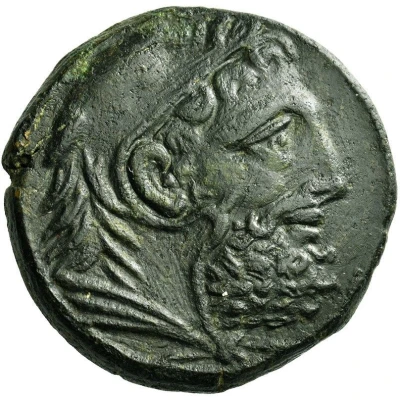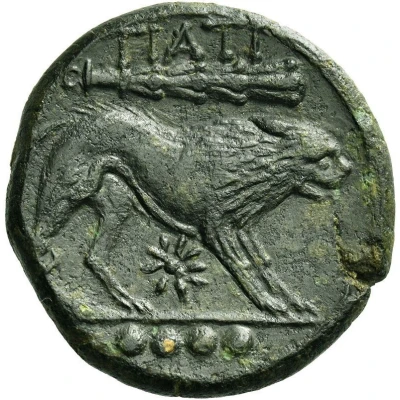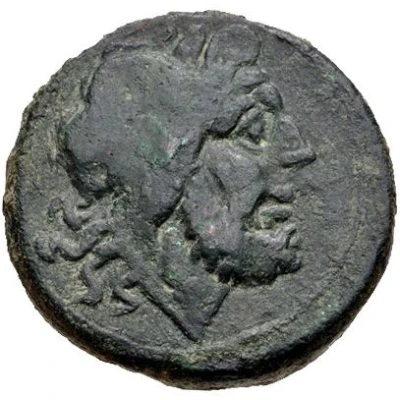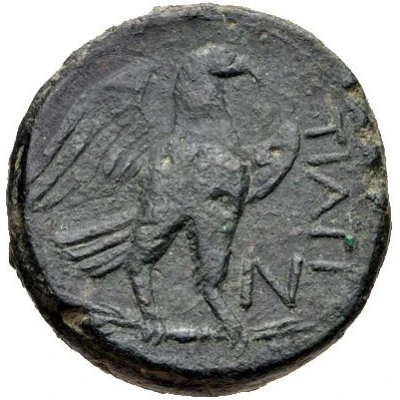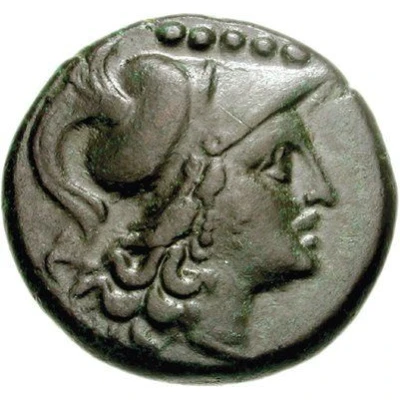
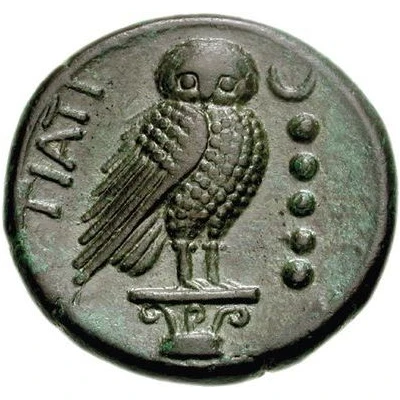

© Classical Numismatic Group, Inc.
Æ Quincunx 225 BC - 200 BC
| Bronze | 16.68 g | 25 mm |
| Issuer | Teate (Apulia) |
|---|---|
| Period | Second Punic War (218 BC - 203 BC) |
| Type | Standard circulation coin |
| Years | 225 BC - 200 BC |
| Value | Quincunx (5⁄12) |
| Currency | Nummus (circa 218-201 BC) |
| Composition | Bronze |
| Weight | 16.68 g |
| Diameter | 25 mm |
| Shape | Round (irregular) |
| Technique | Hammered |
| Orientation | Variable alignment ↺ |
| Demonetized | Yes |
| Updated | 2024-10-09 |
| Numista | N#424453 |
|---|---|
| Rarity index | 100% |
Reverse
Owl standing right, head facing, on bar, Ionic capital, or palm; to right, letter or symbol; five pellets (mark of value) to right or in exergue; at left TIATI.
Script: Latin
Lettering: TIATI
Interesting fact
The Æ Quincunx coin from Teate (Apulia) was used as a form of currency in ancient Rome, specifically during the Roman Republic era. It was made of bronze and had a unique design, featuring a quincunx pattern on one side and a Roman goddess on the other. The quincunx pattern consisted of five dots arranged in a cross-like shape, which represented the five Roman tribes. This coin was an important part of everyday transactions and was used to purchase goods and services. It's fascinating to think that this coin was used by ancient Romans in their daily lives, and it's a great piece of history to learn about!
Price
| Date | Mintage | VG | F | VF | XF | AU | UNC |
|---|---|---|---|---|---|---|---|
| ND (225 BC - 200 BC) | - | - | - | - | - | - |
Values in the table are based on evaluations by sales realized on Internet platforms. They serve as an indication only for Æ Quincunx (225 BC - 200 BC) coin.
